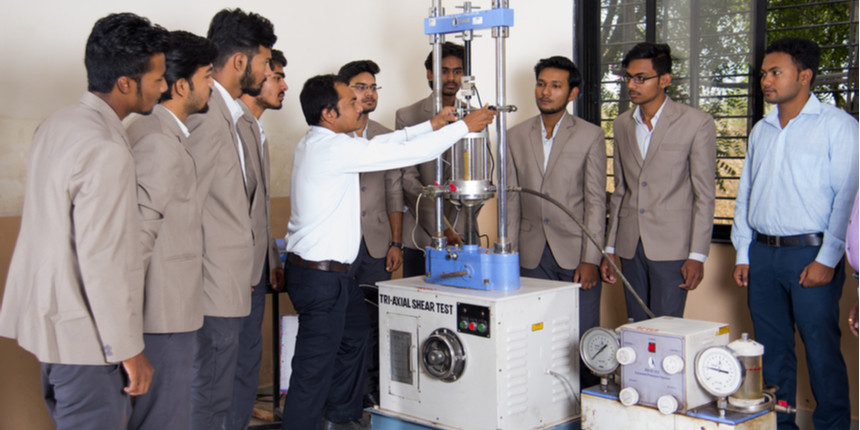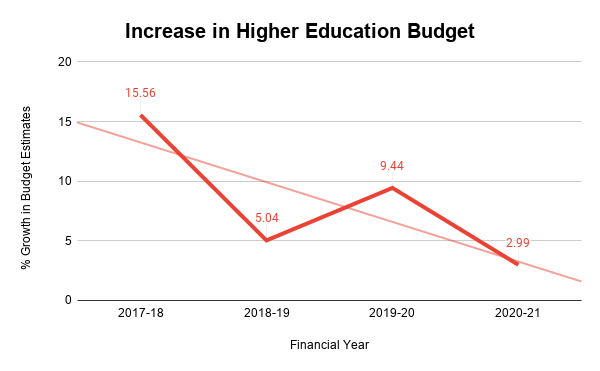Budget too low for excellence in higher education: Parliament Panel
Team Careers360 | March 11, 2020 | 12:53 PM IST | 2 mins read

NEW DELHI: For the 2020-21 financial year, the Department of Higher Education had made a "projected demand" of Rs 58,250.9 crore.
But the department, under the Ministry of Human Resources Development, received Rs 39,466.52 crore – short by over Rs 18,000 crore – in the Union Budget 2020-21, announced on February 1.
This, the Parliamentary Standing Committee on HRD has found too little for “the objectives of expansion and growth” of the sector. The committee, headed by Rajya Sabha member from the BJP, Satyanarayan Jatiya, also said in its report that this shortage of funds “would defeat the endeavour to bring excellence in higher education”. The report was tabled in Parliament during the budget session, on March 5, 2020.
‘A huge gap’
The committee also notes that the government's "allocation for Central Universities is inadequate as compared to their infrastructure, faculty and number of students enrolled”. The budget for Central Universities for 2020-21 – Rs 7,984.9 crore – is less than the revised estimate for the current financial year of Rs 7,477.26 crore.
The report notes that “there is a huge gap between the projected demands and actual allocations made for the department” by the government and states that the committee is of the view that “the allocation needs to be enhanced”.
But the committee has also recommended that the department “reconsider[s]/review[s] its overall mechanism” of budgeting and disbursing of funds. Till February 11, when the department's officials made their presentation to the committee, it had disbursed just 81.20 percent of the 2019-20’s outlay of Rs 38,317.01 crore, revised to Rs 38,317.01 crore.

Vacancies
The department also shared the vacancy status of teaching posts in higher education institutions. By November 15, 2019, the total number of vacancies across public central and state universities and other degree-granting institutions stood at 77,912. By the end of January, 39,655 posts had been advertised for recruitment.
The committee remarked that the number of vacancies in decades-old Central Universities “clearly indicates that this issue has not engaged the attention of the concerned authorities”. It has recommended that the “recruitment process should start well in advance before the post is vacated so that after retirement the newly recruited person takes up position immediately”. This should be become an annual exercise “so that shortage does not develop into crisis”. Also, the committee has suggested that the department should “work out a strategy so as to attract the bright students to the teaching profession” and this could include encouraging faculty to “undertake consultancy” and giving them “start-up financial support”.
The committee also encouraged the department to ensure that certificates earned through the government MOOC platform, SWAYAM – or, ‘Study Webs of Active Learning for Young Aspiring Minds’ – are accepted by employers. Data shared by the department with the committee shows that just 3.9 percent of those who signed up for courses after the trial run from July 2017 to March 2018, actually wrote the exams.
Also read:
- Budget Analysis: Education outlay up 4.69%, smallest hike in 5 years
- Debating the online push: MOOCs, employment and attrition
Write to us at news@careers360.com.
Follow us for the latest education news on colleges and universities, admission, courses, exams, research, education policies, study abroad and more..
To get in touch, write to us at news@careers360.com.